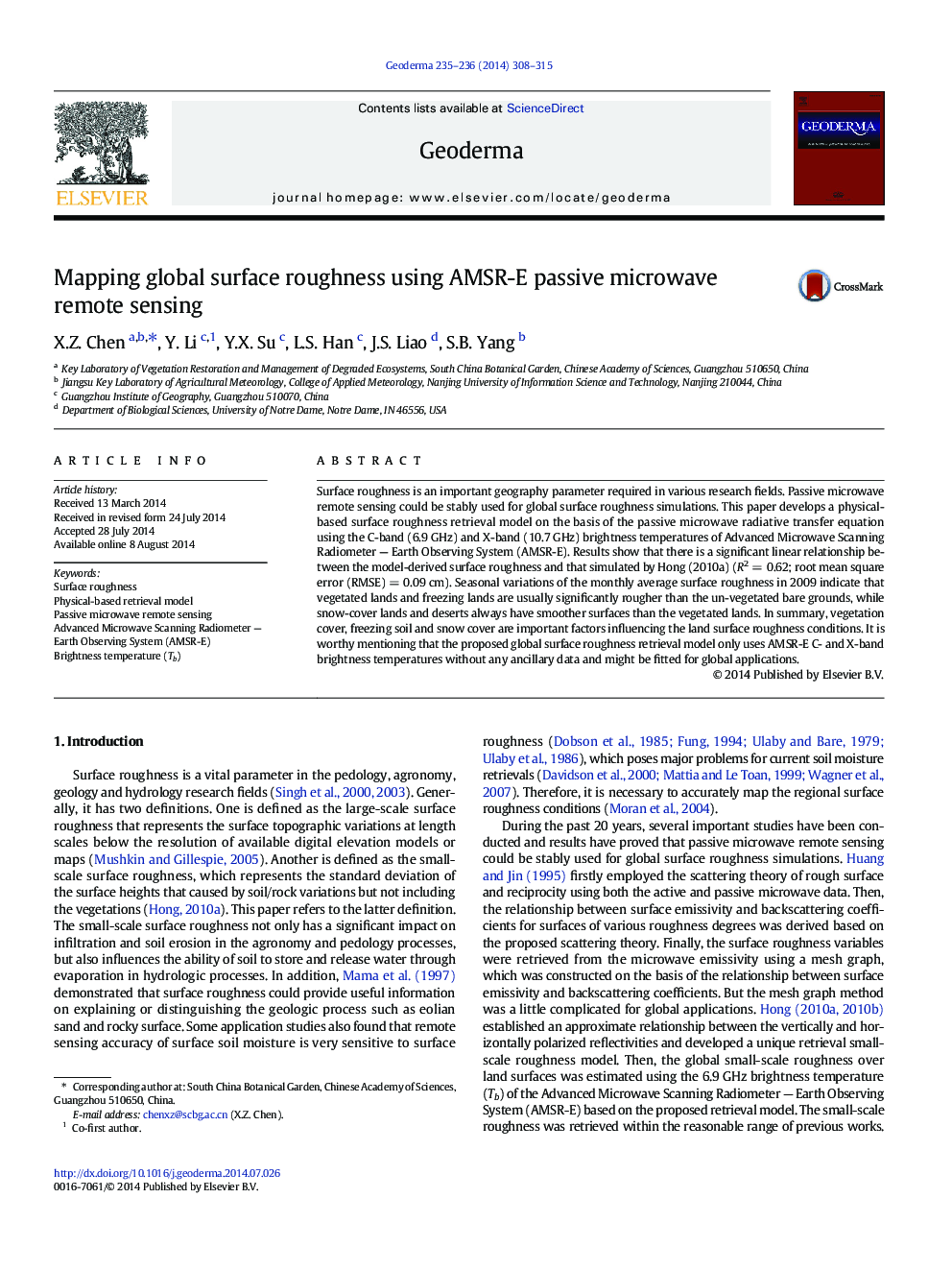| Article ID | Journal | Published Year | Pages | File Type |
|---|---|---|---|---|
| 4573330 | Geoderma | 2014 | 8 Pages |
•The physical-based model might be globally fit.•It uses only AMSR-E C and X-band Tb without ancillary data.•Vegetation cover, freezing soil and snow cover are important impact factors.
Surface roughness is an important geography parameter required in various research fields. Passive microwave remote sensing could be stably used for global surface roughness simulations. This paper develops a physical-based surface roughness retrieval model on the basis of the passive microwave radiative transfer equation using the C-band (6.9 GHz) and X-band (10.7 GHz) brightness temperatures of Advanced Microwave Scanning Radiometer — Earth Observing System (AMSR-E). Results show that there is a significant linear relationship between the model-derived surface roughness and that simulated by Hong (2010a) (R2 = 0.62; root mean square error (RMSE) = 0.09 cm). Seasonal variations of the monthly average surface roughness in 2009 indicate that vegetated lands and freezing lands are usually significantly rougher than the un-vegetated bare grounds, while snow-cover lands and deserts always have smoother surfaces than the vegetated lands. In summary, vegetation cover, freezing soil and snow cover are important factors influencing the land surface roughness conditions. It is worthy mentioning that the proposed global surface roughness retrieval model only uses AMSR-E C- and X-band brightness temperatures without any ancillary data and might be fitted for global applications.
